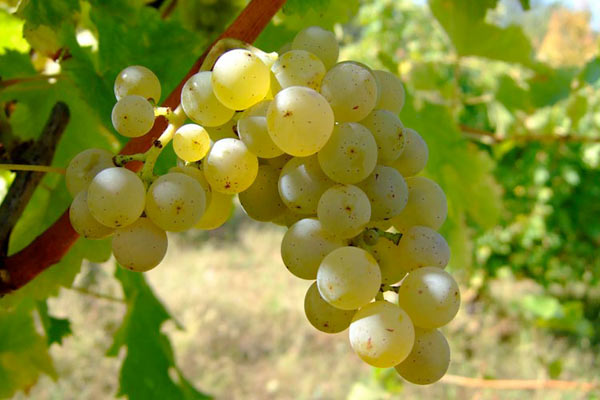Sauvignon blanc:Depending on the climate, the flavor can range from aggressively grassy to sweetly tropical. In cooler climates, the grape has a tendency to produce wines with noticeable acidity and "green flavors"
 of grass, green bell peppers and nettles with some tropical fruit (such as passion fruit) and floral (such as elderflower) notes. In warmer climates, it can develop more tropical fruit notes but risk losing a lot of aromatics from over-ripeness, leaving only slight grapefruit and tree fruit (such as peach) notes.
of grass, green bell peppers and nettles with some tropical fruit (such as passion fruit) and floral (such as elderflower) notes. In warmer climates, it can develop more tropical fruit notes but risk losing a lot of aromatics from over-ripeness, leaving only slight grapefruit and tree fruit (such as peach) notes.
Wine experts have used the phrase "crisp, elegant, and fresh" as a favorable description of Sauvignon blanc from the Loire Valley and New Zealand.[3][4] Sauvignon blanc, when slightly chilled, pairs well with fish or cheese, particularly chèvre. It is also known as one of the few wines that can pair well with sushi.
Along with Riesling, Sauvignon blanc was one of the first fine wines to be bottled with a screwcap in commercial quantities, especially by New Zealand producers. The wine is usually consumed young, as it does not particularly benefit from aging, as varietal Sauvignon blancs tend to develop vegetal aromas reminiscent of peas and asparagus with extended aging. Dry and sweet white Bordeaux, including oak-aged examples from Pessac-Léognan and Graves, as well as some Loire wines from Pouilly-Fumé and Sancerre are some of the few examples of Sauvignon blancs with aging potential.[2]The Sauvignon blanc vine often buds late but ripens early, which allows it to perform well in sunny climates when not exposed to overwhelming heat. In warm regions such as South Africa, Australia and California, the grape flourishes in cooler climate appellations such as the Alexander Valley area.[7] In areas where the vine is subjected to high heat, the grape will quickly become over-ripe and produce wines with dull flavors and flat acidity. Rising global temperatures have caused farmers to harvest the grapes earlier than they have in the past.
The grape originated in France, in the regions of Bordeaux and the Loire Valley.[11] Plantings in California, Australia, Chile and South Africa are also extensive, and Sauvignon blanc is steadily increasing in popularity as white wine drinkers seek alternatives to Chardonnay. The grape can also be found in Italy and Central Europe.
Source: Wikipedia
